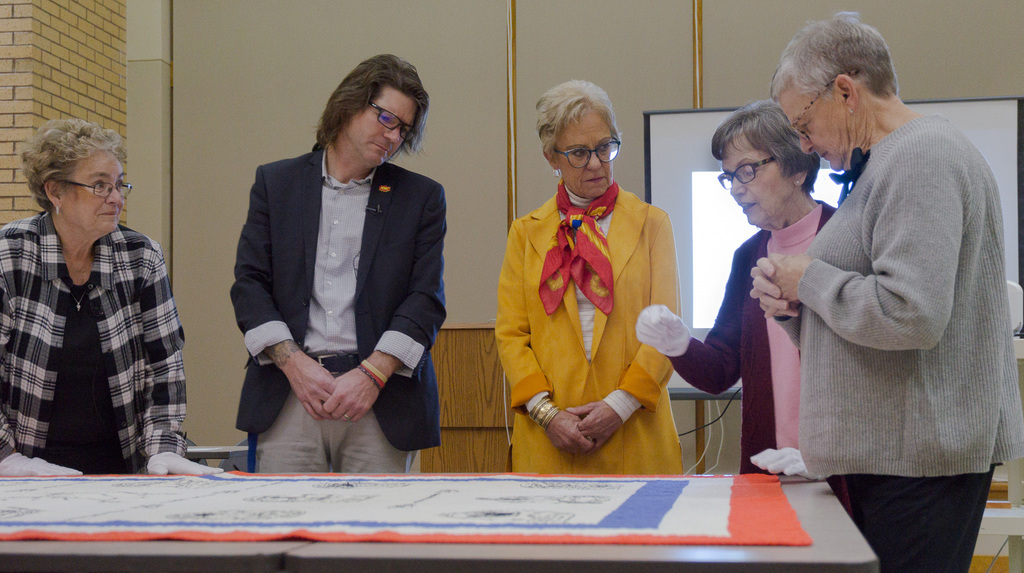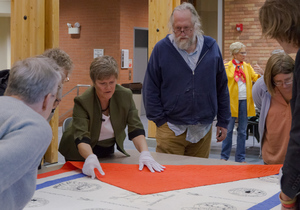Graves Lecture Series panel discusses commemorative quilt

CHADRON – Chadron State College Marketing Coordinator Tena Cook, Associate Professor in Social Science Dr. David Nesheim, and Family and Consumer Sciences Professor Dr. Kim Madsen teamed up for “A Stitch in Time,” a panel discussion about Air Mail Week in 1938 and a commemorative quilt constructed by Cook’s grandmother during a Graves Lecture Oct. 26.
Cook first introduced the audience to her grandmother, Julia Mae Black Cook, and the circumstances that surrounded her life and the construction of the quilt. In 1938, Black was a young, married mother of a 2-year-old. She lived in a trailer in the oil fields at Lance Creek, north of Lusk, Wyoming.
Cook laid out the details surrounding Air Mail week in Lusk.
“In Niobrara County, Wyoming, there were no first-class post offices when Air Mail Week was announced … The United States Postmaster's goal was to have one air mail letter for each person in the United States. In Niobrara County, they had 5,000 residents give or take, and they delivered more than 10,000 letters.”
Cook described the quilt, which features red and blue accents and a white central panel with designs from the commemorative air mail cachets embroidered in black. She also detailed the construction timeline for the 59x92 inch quilt.
“(Julia Cook) started it in May when the postmarks, the special cachets, became available, and she finished it in August for the Niobrara County Fair. She's a young mother living in the oil fields, in a non-air-conditioned trailer house, with a 2-year-old running around, and she made this quilt in May, June, and July, and had it done in August,” Cook said.
Nesheim continued the presentation by discussing the broader context of Air Mail Week.
“Every time you come across an account of this Air Mail Week, you invariably get a characterization of America in the depths of the Depression, and we needed something to root for,” he said.
He described stamp collecting in the historical context and explained there was a real passion for it.
He also described Everett Hogan, a well-known pilot from Scottsbluff, Nebraska, who was brought in by Niobrara County to pick up and deliver mail for Air Mail Week.
“Everett Hogan brought in two planes. He had a little plane that could take off and land at 25 miles an hour. He had a big plane that could take off and land at 65 miles an hour,” Nesheim said.
Nesheim concluded with thoughts on what Air Mail Week represented for rural America.
“This American moment, I would say, represents hope and the future while they're really, really aware of how they're still living in cow pastures,” Nesheim said.
Following Nesheim, Madsen shared information about how the quilt was made and the questions that remain about its construction.
“The white fabric is 100 percent cotton fabric, then there's a layer of wool batting in between that’s very, very thin,” Madsen said.
Madsen presented her own idea of how Julia Cook embroidered the cachet designs on the quilt.
“(Julia Cook may have tried) holding the white fabric up to a window and tracing around the designs from each of those cachets to get that original design before she did her own embroidery on the top of them,” she said.
—Abigail Swanson, College Relations
Category: Campus Events, Campus News

